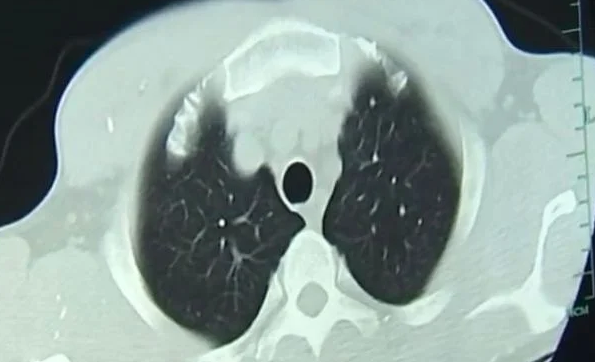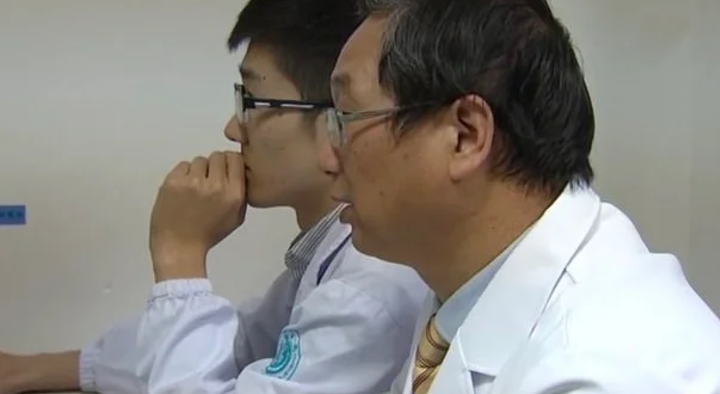Undercooked food might seem harmless at a glance, but in rare cases, it can lead to horrifying health issues. This story of Zhu Zhongfa, a Chinese man whose body became host to hundreds of parasitic worms, underscores the critical importance of proper food preparation. All it took was one poorly cooked pork dish for Zhu’s life to spiral into weeks of seizures, fainting spells, and debilitating symptoms.
Let’s dive into the shocking details of how undercooked pork led to this nightmare and what it teaches us about food safety.

The Start of a Terrifying Journey
It all began when Zhu Zhongfa consumed an undercooked pork dish. At the time, he thought little of it—after all, many people enjoy medium-cooked meat without issue. But this meal carried something sinister: the eggs of Taenia solium, also known as pork tapeworms.
What started as a normal meal soon became the catalyst for Zhu’s nightmare. Within weeks, he began experiencing severe health issues, including seizures and fainting spells. At first, he brushed these symptoms off, but as they intensified, Zhu was forced to seek medical help.
The Shocking Diagnosis
When Zhu was admitted to the hospital, his condition had worsened to the point where he was foaming at the mouth and regularly losing consciousness. Doctors, led by Dr. Huang Jianrong from the Affiliated Hospital of Zhenjiang University School of Medicine, quickly set out to uncover the cause.
After performing brain and chest MRIs, the medical team discovered the unthinkable: Zhu’s body was teeming with tapeworm larvae. These parasites had not only invaded his digestive system but also spread to critical areas like his brain, lungs, and chest muscles.
“He not only had numerous lesions in his brain, but he also had cysts in his lungs and chest muscles,” Dr. Huang reported. The larvae had traveled through Zhu’s bloodstream, forming cysts in his tissues—a condition known as cysticercosis.
How Tapeworms Invade the Body
The life cycle of Taenia solium is both fascinating and terrifying. The eggs of the parasite can survive in undercooked or contaminated pork. When ingested, these eggs hatch into larvae in the human digestive system. From there, they enter the bloodstream and migrate to different parts of the body, including the brain, lungs, and muscles.

Once settled in their new locations, the larvae form cysts, causing a range of symptoms depending on their location:
- In the brain: Seizures, headaches, confusion, and even dementia.
- In the lungs: Persistent coughing and difficulty breathing.
- In muscles: Pain and inflammation.
In Zhu’s case, the larvae caused space-occupying lesions in his brain, leading to the seizures and fainting episodes that disrupted his life.
The Danger of Cysticercosis
Cysticercosis is a dangerous infection that occurs when tapeworm larvae embed themselves in body tissues. The symptoms vary depending on the location of the cysts. For Zhu, the infection in his brain led to neurological disturbances, while cysts in his lungs and chest muscles contributed to additional complications.
One of the most alarming aspects of cysticercosis is how delayed its symptoms can be. In some cases, it takes years for the larvae to grow, form cysts, and cause noticeable health problems. By the time symptoms emerge, the damage can be extensive, requiring aggressive medical intervention.

How Doctors Treated Zhu
Once doctors identified the issue, they wasted no time in treating Zhu. The priority was to eliminate the tapeworms and manage the damage they had caused to his organs. Treatment for such infestations typically involves:
- Antiparasitic medications: These drugs kill the tapeworms and larvae. However, as the larvae die, they can cause an inflammatory response, which must also be managed.
- Anti-inflammatory medications: To reduce swelling in the brain and other affected areas.
- Supportive care: For symptoms like seizures, fainting, and other complications.
In Zhu’s case, over 700 worms were removed from his body—a staggering number that highlights just how invasive these parasites can be.
Lessons Learned: The Importance of Proper Food Preparation
Zhu’s ordeal serves as a sobering reminder of the dangers of consuming undercooked food. Here are some key takeaways to protect yourself and your loved ones:
1. Always Cook Meat Thoroughly
The safest way to kill tapeworm eggs and larvae is to cook pork to an internal temperature of at least 145°F (63°C). Use a food thermometer to ensure the meat reaches the appropriate temperature.

2. Practice Good Kitchen Hygiene
Cross-contamination is a common way for parasites and bacteria to spread. Always wash your hands, utensils, and surfaces after handling raw meat.
3. Be Cautious with Street Food
While street food can be delicious, it’s often harder to ensure proper food safety practices. Be mindful of where and how your food is prepared.
4. Stay Informed About Foodborne Illnesses
Understanding the risks associated with undercooked or contaminated food can help you make informed choices and avoid preventable health issues.
Why Early Medical Attention Matters
Zhu’s story also emphasizes the importance of seeking medical attention for unusual symptoms. Had he waited longer to see a doctor, the tapeworms could have caused even more damage, potentially leading to irreversible complications or even death.
If you experience persistent symptoms like seizures, fainting, or unexplained neurological issues, don’t hesitate to consult a healthcare professional.
Conclusion
The story of Zhu Zhongfa and his battle with 700 tapeworms is a chilling example of how a single meal can have life-altering consequences. While the idea of worms invading your body may seem like something out of a horror movie, it’s a very real risk associated with undercooked pork and poor food safety practices.
By taking simple precautions—cooking meat thoroughly, practicing good hygiene, and staying vigilant about your health—you can significantly reduce your risk of falling victim to parasitic infections like cysticercosis. Remember, prevention is always better than cure, and Zhu’s story is a powerful reminder of the importance of food safety.


